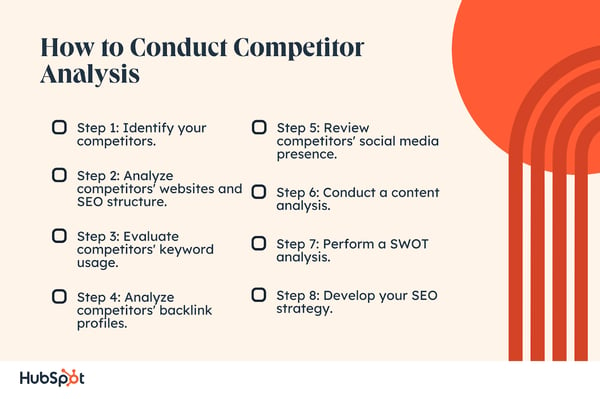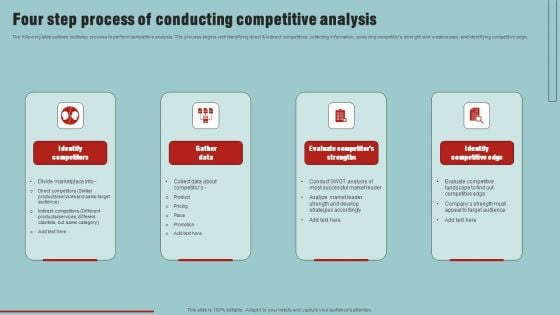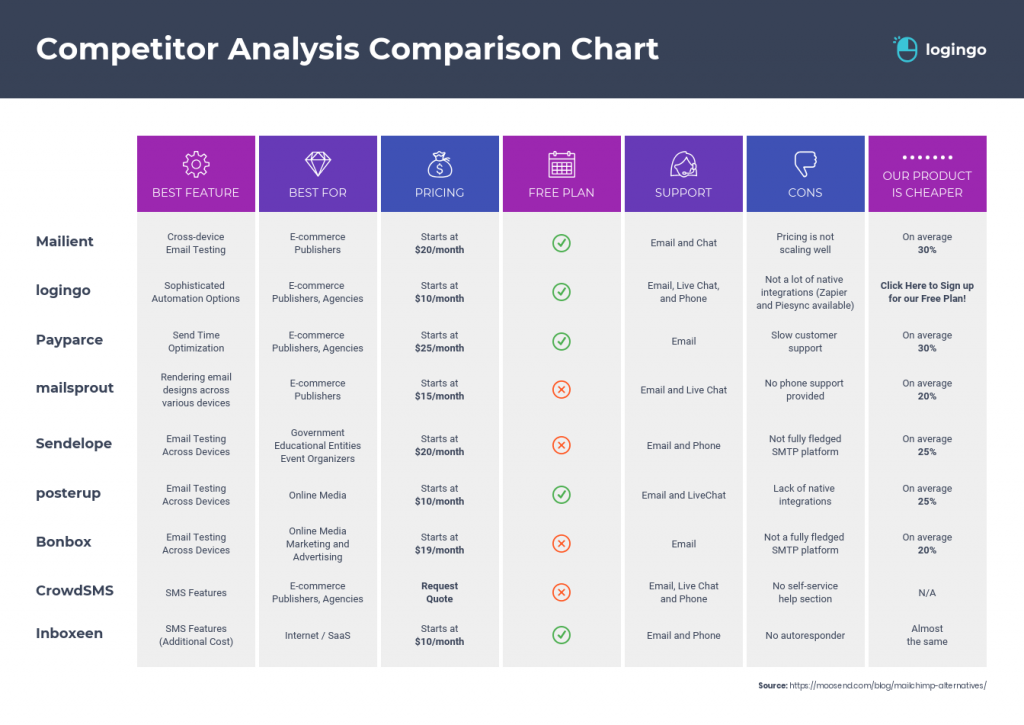Unveil secrets of conducting a competitive audit in this detailed step-by-step guide, giving you the edge in your industry.

Image courtesy of via DALL-E 3
Table of Contents
- Introduction: What is a Competitive Audit?
- Identify Your Competitors
- Gather Information About Competitors
- Step 3: Analyze Competitor Products and Services
- Understand Competitor Marketing Strategies
- Evaluate Competitor Strengths and Weaknesses
- Step 6: Keep Track of Competitor Activities
- Conclusion: Using What You Learn
- Frequently Asked Questions (FAQs)
Introduction: What is a Competitive Audit?
Have you ever wondered why businesses always seem to be keeping an eye on what their competitors are up to? Well, they’re doing something called a competitive audit! Let’s dive into what exactly a competitive audit is and why it’s essential to understand your competition.
Why Learn About Competitors?
Knowing about your competitors can actually help you make better decisions for your own business. By understanding what others in the same field are doing, you can learn from their successes and mistakes, and ultimately improve your own strategies.
How Can This Guide Help?
In this guide, we’ll take you through all the steps to conduct a competitive audit. You’ll learn how to find your competitors, gather information about them, analyze their products and services, understand their marketing strategies, evaluate their strengths and weaknesses, and keep track of their activities. By the end of this guide, you’ll be equipped with valuable insights that can help you stay ahead of the competition!
Identify Your Competitors
Before diving into a competitive audit, the first step is to identify who your competition is. By understanding who your competitors are, you can gain valuable insights into your industry and market. Here are some simple ways to get started:
Look Around You
Begin by observing the businesses around you. Are there any companies offering similar products or services in your area? Take note of their locations, branding, and customer interactions. These could be your direct competitors.
Use the Internet
Take your search online to find more competitors. Use search engines to look for businesses that operate in your industry or niche. Check out their websites and social media profiles to learn more about what they offer and how they present themselves to customers.
By noticing your surroundings and conducting online research, you can create a comprehensive list of your competitors to guide you through the next steps of your competitive audit.
Gather Information About Competitors
When you want to learn more about your competitors, one of the best places to start is by checking out their websites. Their websites can give you valuable information about the products or services they offer, their pricing strategies, and even their target audience.

Image courtesy of blog.hubspot.com via Google Images
Check Their Social Media
In today’s digital age, social media is a powerful tool for businesses to connect with their customers. By looking at your competitors’ social media pages, you can get insights into their marketing strategies, customer engagement tactics, and even customer feedback. Social media can provide a window into how your competitors are positioning themselves in the market.
Step 3: Analyze Competitor Products and Services
When analyzing your competitors’ products and services, it’s essential to understand what they are offering to their customers. Take a look at the types of products or services they provide. Are they similar to what you offer, or do they have unique offerings that set them apart? By understanding what your competitors are selling, you can identify any gaps in the market that you could potentially fill with your own products or services.
Quality and Prices
Assessing the quality and prices of your competitors’ offerings is crucial in determining how you can position your own business in the market. Look at the quality of their products or services – are they known for high quality or affordability? Understanding where they excel and where they fall short can help you refine your own offerings to meet the needs of your target customers. Additionally, comparing prices can give you insights into pricing strategies that work in your industry and help you set competitive prices for your own products or services.
Understand Competitor Marketing Strategies
When it comes to understanding your competitors, one key aspect to focus on is their advertisements and promotions. By studying their ads, you can get insights into how they are trying to attract customers. Look out for the messages they are conveying, the images they are using, and where they are placing their ads. This information can give you a good understanding of their target audience and their marketing tactics.

Image courtesy of www.slidegeeks.com via Google Images
Use of Social Media
Social media has become a powerful marketing tool for businesses. It is essential to keep an eye on what your competitors are doing on social media platforms. Check out their posts, the type of content they are sharing, their engagement levels, and how they interact with their followers. Understanding their social media strategy can help you assess their online presence and see how they are connecting with their audience.
Evaluate Competitor Strengths and Weaknesses
In order to stay competitive in the market, it’s crucial to understand what your competitors are good at and where they might be lacking. By evaluating their strengths and weaknesses, you can strategically position your own business for success.
Looking for Strengths
When evaluating competitors, pay close attention to what they excel at. This could be their exceptional customer service, unique product offerings, strong brand presence, or innovative marketing strategies. Identifying these strengths can provide valuable insights into what your business may need to improve on or where you can differentiate yourself in the market.
Finding Weak Points
Similarly, it’s important to identify areas where your competitors may be falling short. These weaknesses could range from poor customer reviews, outdated technology, ineffective advertising campaigns, or inconsistent product quality. By pinpointing these weak spots, you can capitalize on them to gain a competitive advantage and attract customers who may be dissatisfied with your competitors.
Step 6: Keep Track of Competitor Activities
Once you have gathered information about your competitors, it’s crucial to keep track of their activities to stay informed and competitive in the market. Here are some strategies to help you monitor your competitors effectively:

Image courtesy of venngage.com via Google Images
Set Up Alerts
One way to stay updated on your competitors is by setting up alerts through various online tools. These alerts can notify you whenever your competitors launch a new product, run a promotion, or make any significant moves in the market. By receiving timely updates, you can quickly adapt your own strategies to stay ahead of the competition.
Regular Check-Ins
In addition to setting up alerts, it’s essential to regularly check in on your competitors’ activities. This could involve visiting their websites, following their social media accounts, and monitoring any industry news related to them. By staying vigilant and informed about what your competitors are doing, you can identify new trends, anticipate their next moves, and adjust your own strategies accordingly.
Conclusion: Using What You Learn
After completing a thorough competitive audit, you now have a wealth of valuable information about your competitors. Let’s explore how you can make the most of this knowledge to benefit your own business.
Making Better Decisions
By understanding what your competitors are offering, the quality of their products or services, and their marketing strategies, you are equipped to make informed decisions for your own business. Use this information to identify gaps in the market that you can fill, adjust your pricing strategies, or improve your marketing tactics. Knowing what your competitors are doing can guide you in setting yourself apart and attracting more customers.
Staying Ahead
Continuous monitoring and learning from your competitors are key to staying ahead in the competitive landscape. As markets evolve and consumer preferences change, it’s essential to adapt your strategies accordingly. By regularly conducting competitive audits and keeping track of your competitors’ activities, you can stay agile and responsive to emerging trends. Embrace a mindset of continuous improvement and innovation to ensure your business remains competitive in the long run.
Want to turn these SEO insights into real results? Seorocket is an all-in-one AI SEO solution that uses the power of AI to analyze your competition and craft high-ranking content.
Seorocket offers a suite of powerful tools, including a Keyword Researcher to find the most profitable keywords, an AI Writer to generate unique and Google-friendly content, and an Automatic Publisher to schedule and publish your content directly to your website. Plus, you’ll get real-time performance tracking so you can see exactly what’s working and make adjustments as needed.
Stop just reading about SEO – take action with Seorocket and skyrocket your search rankings today. Sign up for a free trial and see the difference Seorocket can make for your website!
Frequently Asked Questions (FAQs)
What if I Can’t Find Any Competitors?
It can sometimes be challenging to identify direct competitors, especially if you have a unique business concept. If this is the case, try broadening your search to include businesses that offer similar products or services, even if they’re not identical to yours. You can also look for companies targeting the same customer base, even if their offerings differ. By expanding your search criteria, you might uncover competitors you hadn’t considered before.
How Often Should I Do a Competitive Audit?
The frequency of conducting competitive audits can vary depending on your industry and the pace of change within it. In general, it’s a good practice to perform a competitive audit at least once a year to stay informed about your competitors’ activities and any shifts in the market landscape. If you operate in a rapidly evolving industry, you may want to consider conducting audits more frequently, such as every six months or quarterly. Regular monitoring ensures that you stay up-to-date with changes in your competitive environment and can adjust your strategies accordingly.







